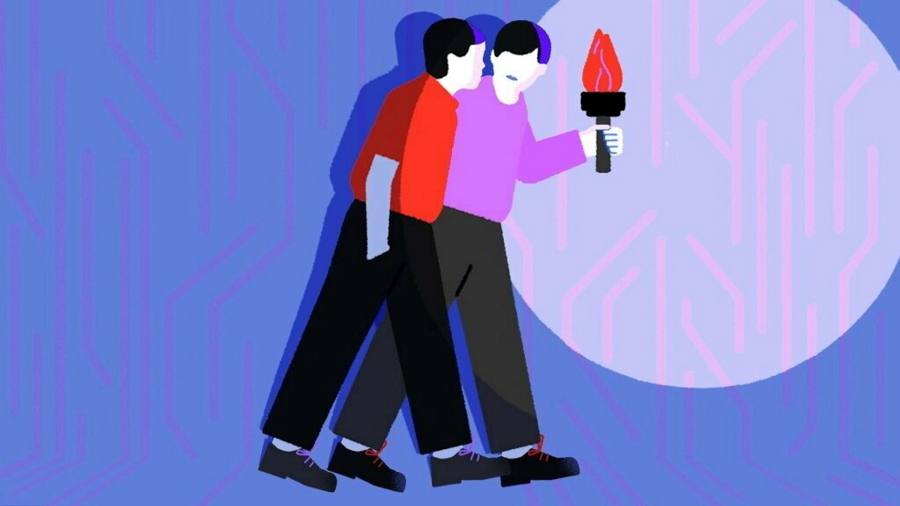Receive free Artificial intelligence updates
We’ll send you a myFT Daily Digest email rounding up the latest Artificial intelligence news every morning.
The writer is chief executive of the New America think-tank and an FT contributing editor
“In the age of AI, all the world’s a classroom
And teachers are the guides to lead the way; With knowledge at the students’ fingertips
Teachers help them find and use it every day.”
ChatGPT wrote that adaptation of one of Shakespeare’s most famous speeches. The generative artificial intelligence language model needed a prompt, of course, and a critical reaction to its bland initial version. I was able to supply the necessary guidance; it took only two rounds to come up with a Shakespearean version of the point I wanted to make.
Which was, as the verse indicates, that in a world of ubiquitous AI, we will need more guides, coaches, navigators, mentors, tutors and advisers than ever. All are a form of individualised teaching. And teaching, in turn, is simply human performance enhancement. In its ideal form, it is the cultivation of positive capacities to enable individuals and groups to achieve their full potential.
When I was growing up it was simple. There was “intelligence” and human beings had a high, medium or low quotient: hence the IQ test. Human brains were containers and the job of a teacher was to fill them with knowledge. They were also “computers” in the pre-electronic sense of the word. At least from a layman’s perspective, people with high IQs could learn, remember, regurgitate and calculate more quickly than others.
Today, we have multiple kinds of human intelligence. Harvard psychologist Howard Gardner described eight types in 1983: linguistic, logical-mathematical, musical, spatial, body-kinaesthetic, interpersonal, intrapersonal and naturalistic. By the 1990s, psychologists such as Peter Salovey, now president of Yale, had developed EQ tests to assess levels of “emotional intelligence”, defined as the ability “to perceive, use, understand, and regulate emotions”.
Generative AI focuses us on those dimensions of human intelligence that generate new patterns of symbols — words, numbers, notes, images — from the recognition and distillation of existing patterns amid the billions of things that we “know”. The line between what can be generated and true creativity — the production of ideas that are genuinely “new” — is already being called into question. The scope and speed of processing power, another capacity of the human brain that can be duplicated by machine, is also under increased scrutiny.
So the significance of generative AI is less that it is artificial than it has replicated — and thereby drawn attention to — specific strands of intelligence that we must now integrate into our understanding of our abilities, just as we have done with previous technologies. After all, Google is just artificial memory; those of us afflicted with “senior moments”, in which a name or fact suddenly disappears from our internal memory, use it as an instantly searchable external organ.
Instant encyclopedias in our pockets, like the advent of calculators, have already decreased the importance of rote learning and increased the necessity of learning how to use these new tools. But generative AI also forces us to question what we are teaching humans, as well as why, how and when.
Critical thinking has never been more important. Generative intelligence, both natural and artificial, can organise, synthesise and distil vast amounts of knowledge, but with continual and ineradicable errors. Nobel laureate Daniel Kahneman’s book Thinking, Fast and Slow is a manual of the mistakes that result from the workings of different parts of our brains. The internet is even now awash with books, articles, blog posts, tweets and videos riddled with unintentional (as well as intentional) errors. Generative AI will inevitably compound these errors in ever more authoritative-sounding ways.
Teachers of all kinds must ensure their students continually question what they think they know — and they are able to use both natural and artificial sources of intelligence. Armed with the tools of curiosity and healthy scepticism, they must master nuance. And, as the emerging career category of “prompt engineers” demonstrates, they must become ever more skilled at asking questions.
If the goal of education is to enable our full potential, then we must rethink how we are developing all human capacities, taking advantage of the technological tools that augment our natural abilities. This education needs to be life-long.
Top performers in sports, music and, increasingly, business have coaches of many different kinds. These teams increasingly use technology to enhance the feedback they are able to provide their clients in order to constantly improve their performance. As technological advances enhance human capabilities, our need for human guides will only grow.
Read the full article here



